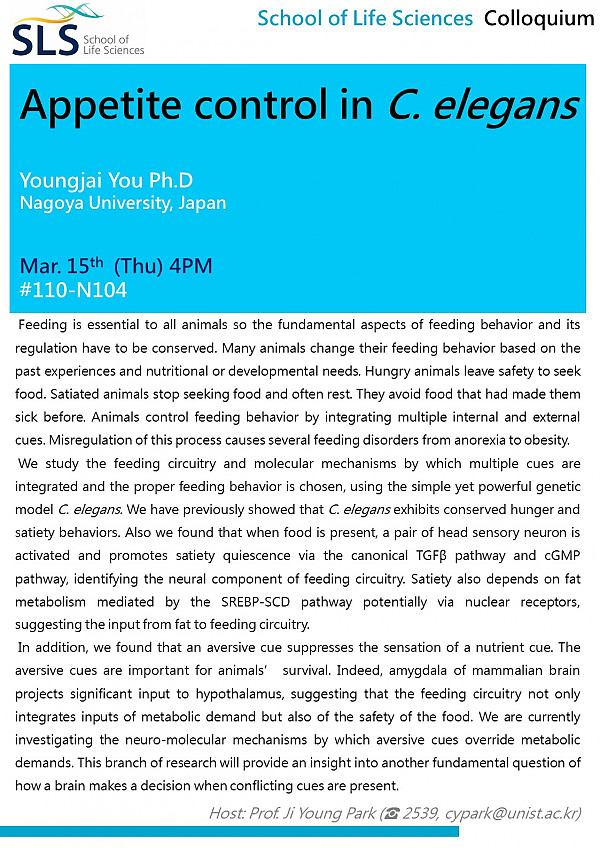Seminars & Speakers
게시물 정보
글제목 :
Appetite control in C. elegans
추가 정보 영역
| Speaker | Young-Jai You |
| Affiliation | Nagoya University |
| Date | March 15, 2018 |
| Time | 4:00 pm - 5:30 pm |
| Venue | Room N104, Bdg 110 |
| Sponsor | UNIST-Life Sciences |
| Host | Ji Young Park |
| Contact | cypark@unist.ac.kr |
| Phone | 2539 |
| Attach |
콜로퀴움 포스터_prof. 유영재.jpg
(402.1K)

|
We study the feeding circuitry and molecular mechanisms by which multiple cues are integrated and the proper feeding behavior is chosen, using the simple yet powerful genetic model C. elegans. We have previously showed that C. elegans exhibits conserved hunger and satiety behaviors. Also we found that when food is present, a pair of head sensory neuron is activated and promotes satiety quiescence via the canonical TGFβ pathway and cGMP pathway, identifying the neural component of feeding circuitry. Satiety also depends on fat metabolism mediated by the SREBP-SCD pathway potentially via nuclear receptors, suggesting the input from fat to feeding circuitry.
In addition, we found that an aversive cue suppresses the sensation of a nutrient cue. The aversive cues are important for animals’ survival. Indeed, amygdala of mammalian brain projects significant input to hypothalamus, suggesting that the feeding circuitry not only integrates inputs of metabolic demand but also of the safety of the food. We are currently investigating the neuro-molecular mechanisms by which aversive cues override metabolic demands. This branch of research will provide an insight into another fundamental question of how a brain makes a decision when conflicting cues are present.








